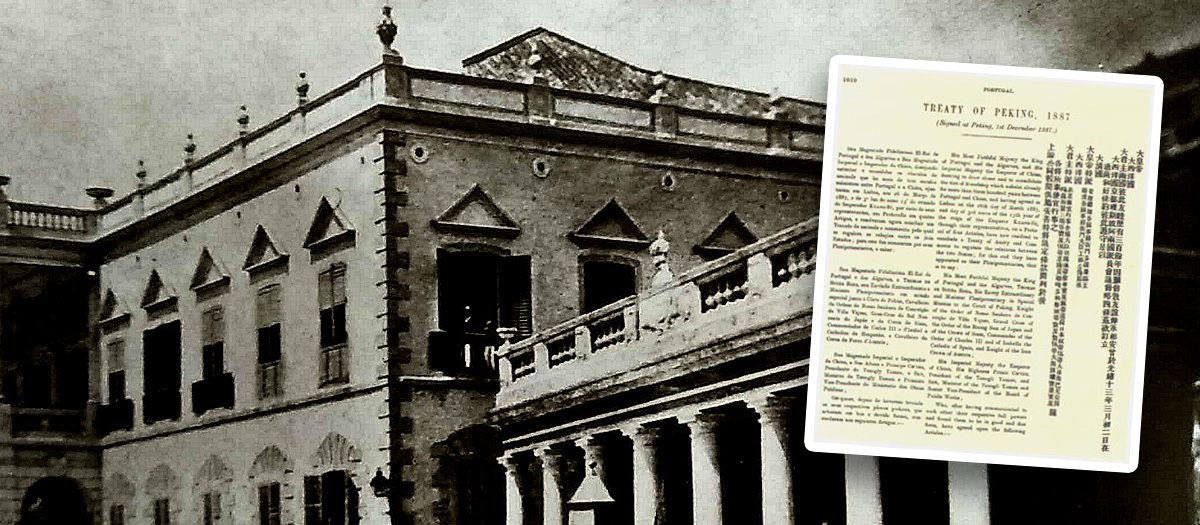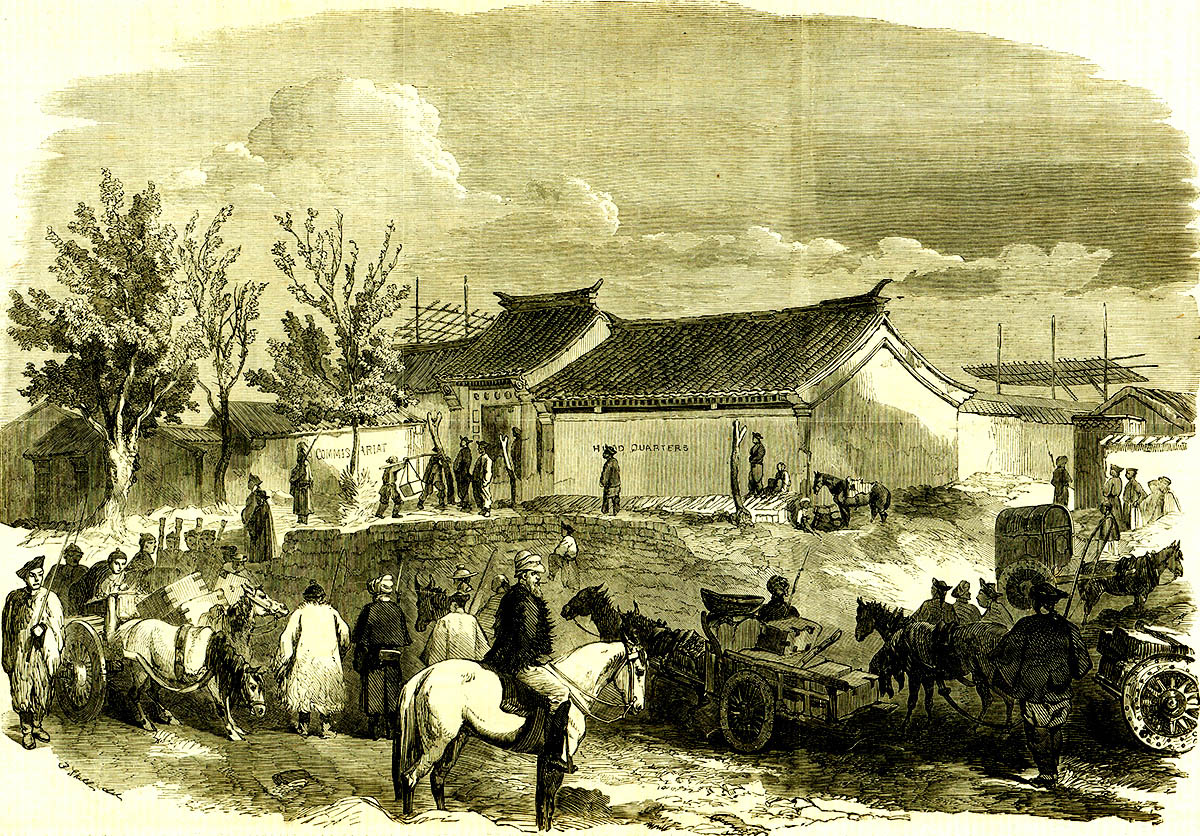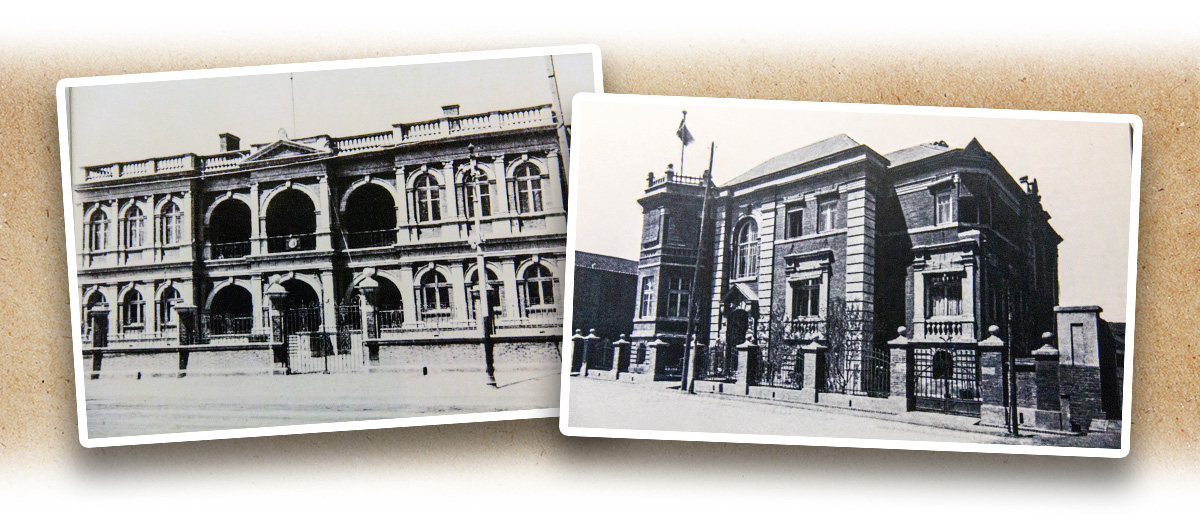From 1840 onwards, a succession of military defeats in external wars compelled China to give up various aspects of its national sovereignty, including but not limited to land cessions, payment of indemnities, the opening of treaty ports, and the establishment of foreign concessions.
In terms of territories lost, Hong Kong Island and southern Kowloon were ceded to Britain; Taiwan and the islands of Penghu (澎湖) were ceded to Japan; Portugal’s colonial governance of Macao was recognised under treaty terms; and 1.5 million square kilometres of land in north-eastern and north-western China was seized by Russia.
In terms of indemnity payment, the major sums paid by China under unequal treaties included: 21 million taels of silver to Britain under the Treaty of Nanking (《南京條約》, Treaty of Nanjing); eight million each to Britain and France under the Conventions of Peking (《北京條約》, Conventions of Beijing); 200 million for war indemnities, another 31.5 million to Japan to redeem Liaodong Peninsula (遼東半島), and the military expenses incurred by the Japanese occupation of Weihaiwei (威海衛) under the Treaty of Shimonoseki (《馬關條約》).
The opening of treaty ports was in line with the practice of free trade. However, China was forced to do so under unfair conditions. It included granting the imperialist powers the right to negotiate tariff rates and other privileges, which deprived China of its tariff autonomy. The treaty ports forced open prior to 1899 included Guangzhou (廣州), Xiamen (廈門), Fuzhou (福州), Ningbo (寧波), Shanghai (上海), Niuzhuang (牛莊), Dengzhou (登州), Tainan (台南), Tamsui (淡水), Chaozhou (潮州), Qiongzhou (瓊州), Hankou (漢口), Jiujiang (九江), Nanjing (南京), Zhenjiang (鎮江), Tianjin (天津), Shashi (沙市), Chongqing (重慶), Suzhou (蘇州), and Hangzhou (杭州).
The foreign powers also obtained concessions with administrative autonomy, the right to consular jurisdiction, and the right to freely inhabit their citizens. This meant that they were virtually the imperialist powers’ own “states within a state” on the Chinese soil. Those notable concessions included the British and French concessions in Shanghai and Guangzhou; the British and Japanese concessions in Xiamen; the Kulangsu International Settlement (鼓浪嶼公共租界); the British, American, French, German, Japanese, Russian, Belgian, Italian, and Austrian concessions in Tianjin; the British concessions in Zhenjiang and Jiujiang; the British, French, German, Russian, and Japanese concessions in Hankou; the Japanese concession in Chongqing, Hangzhou, Suzhou, Shashi, and Fuzhou; and the Beijing Legation Quarter (北京使館界).
|
|
The opening of treaty ports ended China’s seclusion from the rest of the world. However, why is it still considered a violation of China’s sovereignty? |
|
|
See answer below. |
A painting of Hong Kong Island when it first opened as a treaty port (left) and a photo of the southern edge of Kowloon Peninsula in the 1870s (right). Hong Kong Island and southern Kowloon were ceded to Britain in 1842 and 1860 respectively. The cession of Hong Kong Island marked the beginning of the historic trend of land cession in China.
On the left: the modern-day Lake Balkhash in Kazakhstan; on the right: the modern-day Ussuri River (烏蘇里江). Since 1858, Russia seized approximately 1.5 million square kilometres of the Chinese territory. These vast tracts of land encompassed areas north of the Heilong River (黑龍江, also called the Amur River), south of the Stanovoy Range, east of the Ussuri River and near Lake Balkhash.
On the left: the Macao Governor’s Palace and its guard post; on the right: the Sino-Portuguese Treaty of Peking (《中葡北京條約》) signed in 1887. The treaty officially granted Portugal the right to govern Macao.
During the Ming and Qing dynasties, the Portuguese had the Chinese government’s tacit permission to reside in and help administer Macao, even though no written agreement existed between China and Portugal. China still had sovereignty over Macao, while Portugal paid an annual ground rent to the Chinese government. In 1849, however, when Qing China’s weaknesses exposed after the First Opium War, Portugal stopped paying rent to it, seized control of the Barrier Gate, and gradually occupied more locations: Taipa Island (氹仔) in 1851, Coloane Island (路環) in 1864, Wangxia Village (望廈村) in 1883 and so on. The continued slump in China’s national power gave Portugal the opportunity to sign a treaty with it known as the Sino-Portuguese Treaty of Peking, also called the Treaty of Amity and Commerce between China and Portugal (《中葡和好通商條約》). The treaty confirmed Portugal’s perpetual occupation and government of Macao and granted it the right to consular jurisdiction.
Following its defeat in the First Sino-Japanese War in 1895, China was forced to cede Taiwan and the islands of Penghu to Japan. On the left: an illustration of a Japanese warship in the Port of Kaohsiung (高雄); on the right: a photo of the Japanese troops occupying Penghu and the residents there.
An 1861 woodblock print that depicts the Chinese transporting part of the Second Opium War’s war indemnities to the British command headquarters.
The Office of the Ministry of Revenue in the Qing dynasty. It managed the national finances. The huge war indemnities incurred from numerous military defeats in the late Qing era plunged China into serious financial difficulties.
In 1863, the British and American concessions in Shanghai were merged to form the Shanghai International Settlement (上海公共租界).
In the book The History of Chinese Concessions (《中國租界史》), Fei Chengkang (費成康) describes concessions as residential and trading zones in treaty ports in East Asian countries that were established and managed by the imperialist powers. They were characterised by the cession of administrative and management authority and various aspects of national sovereignty from the host nation to the foreign powers. Foreign consuls and expatriate groups set up municipal councils to exercise such authority over the concession zones, in effect making them the imperialist powers’ own “states within a state” not subjected to the host nation’s administrative and management authority.
During the mid-19th century, the Municipal Administrative Council (公董局) was the highest administrative authority of the French concession in Shanghai.
Shanghai opened to foreign trade in 1842 as one of the five treaty ports established under the Treaty of Nanking. On 29 November 1845, the first concession zone appeared in Shanghai. Britain, France, and the United States were the first to have their own concessions. In 1863, the British and American concessions were merged to form the Shanghai International Settlement. Later, France set up the Municipal Administrative Council to govern the French concession. After Shanghai, various other locations in China were selected to establish foreign concessions.
Concessions were typically governed by municipal councils. The photo on the left shows the municipal council building of the Russian concession in Tianjin; the photo on the right shows the municipal council building of the German concession in Tianjin.
On the left: a scene of the British concession in Guangzhou in the late Qing dynasty; on the right: a modern-day photo of Shamian Christian Church (沙面基督堂) built in 1864 in the former British concession in Guangzhou. It was where foreign nationals went to church service.
|
|
The opening of treaty ports ended China’s seclusion from the rest of the world. However, why is it still considered a violation of China’s sovereignty? |
|
|
The opening of treaty ports was in line with the international business practice of free trade. However, how those ports were operated as stipulated in the Sino-foreign treaties gave an unfair advantage to the foreigners. For example, China was required to seek the foreign powers’ agreement when setting its tariff rates. This resulted in a tariff of just five per cent on all imports at one point, ultimately reducing the country to a dumping ground for foreign goods. In addition, foreign trading vessels could visit various treaty ports freely by paying the one-off customs duties. Moreover, the foreign powers established concessions at numerous treaty ports in which they exercised administrative autonomy and the right to consular jurisdiction. Their citizens enjoyed the right to freely inhabit those areas. In addition to these violations, China also had to grant the most-favoured-nation treatment to the foreign powers. |
Sources of most photos used in this feature piece: Visual China Group (pictures 1-7 and 10), Fotoe (pictures 1, 8 and 9), misc. photo sources.














